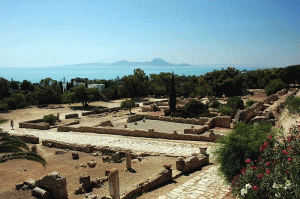Could the harbor of ancient Carthage been a harbor of Atlantis?
According to “modern-day Indian Jones” David Hatcher Childress, the harbor of ancient Carthage resembled the harbor of the capital of the mythical lost city of Atlantis. We know the description of the Atlantean harbor from Plato’s Timaeus/Critias. Carthage, ancient and modern-day city with a population of about 20,000, is situated on the southern shore of the Mediterranean Sea in Tunisia on the northern end of the Sahara Desert.
Two large, artificial harbors were built within the city, one for harboring the city’s massive navy of 220 warships and the other for mercantile trade. A walled tower overlooked both harbours.
Childress had said that the Sahara Desert is a possible location of the mythical Atlantis, especially considering that the harbor of ancient Carthage resembled that of Atlantis. Nonetheless, it doesn’t seem possible , that ancient Carthage could have been associated with Atlantis, considering that the Sahara desert is a desert and Atlantis was a huge island/continent.
However, Carthage is along the Sahara and the Sahara is a dried seabed. Here’s a possible scenario: Atlantis plunged into the sea around 9,000 B.C. Underwater, the ruins of Atlantis became a seabed. When the land rose, the seabed dried and became the Sahara Desert.
I know it’s a long shot, but, when was the Sahara a seabed? After Atlantis plunged into the sea? It deserves further research, doesn’t it?
